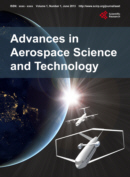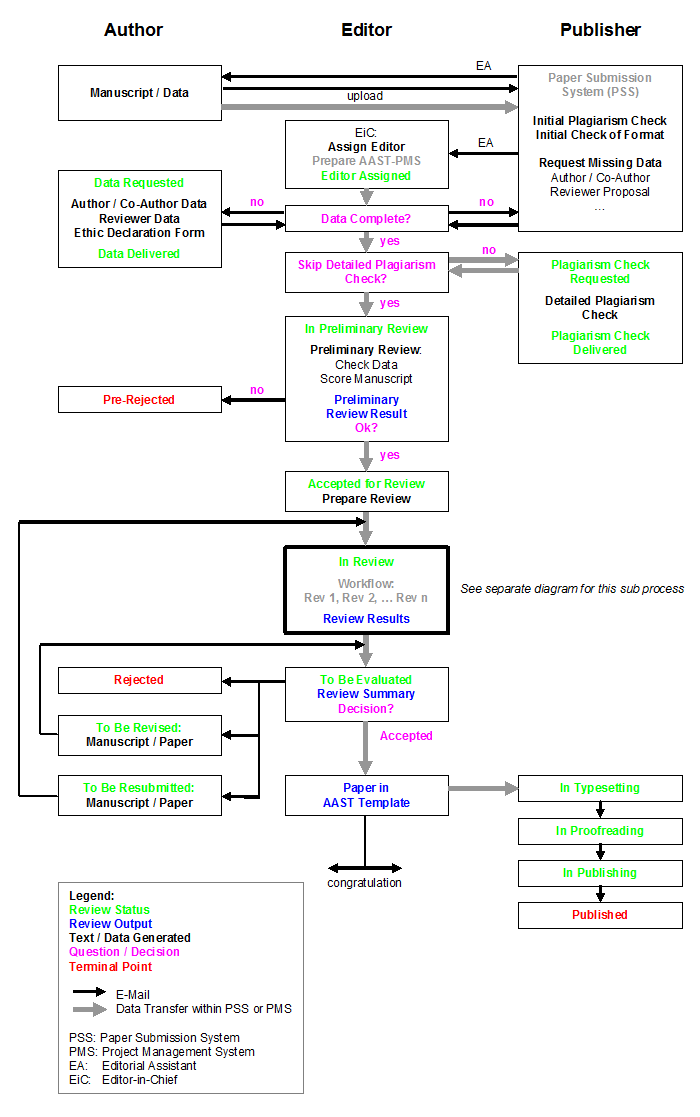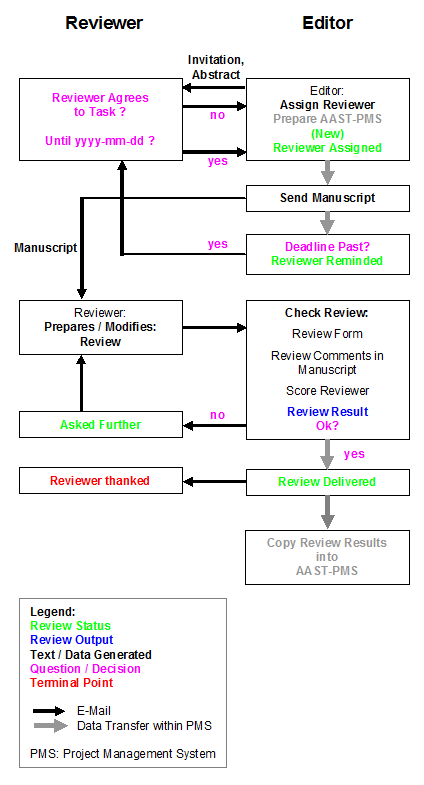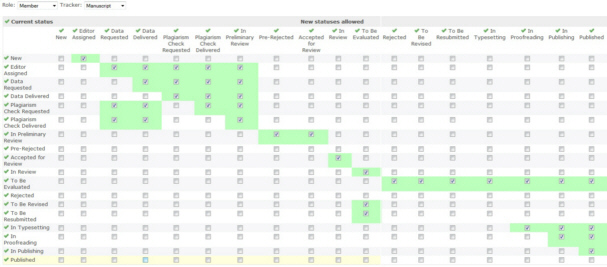
Advances in Aerospace Science and Technology (AAST)
AAST: The Review Process in Flow Charts
The Flow Charts
The journal AAST at SCIRP follows its "AAST peer review process".
It can best be described with flow charts.
Figure 1 shows the overall process.
Figure 2 shows one sub process in detail, the "AAST Reviewer Handling Process".
The review process follows a standard pattern common also to many other scholarly journals.
The depicted process is just giving a little more detail in comparison the "Generic SCIRP Peer Review Process"
which is presented on the SCIRP pages under
Author's Guidelines - Review Process.
Also available is
The Review Process in Textual Form
that opens in a separate window and can be read while studying the flow charts.

Figure 1.
Flow Chart of the "AAST Peer Review Process":
Handling of one manuscript from 'submission' to 'publication'.
The Flow Chart is stressing the Editors view of things.
Processes and action items at the publisher are not shown in all detail.
The sublevel process "In Review" consists of multiple parallel review processes initiated mostly simultaneously.
Figure 2 shows one such single review process called "AAST Reviewer Handling Process".

Figure 2.
Flow Chart of a single "AAST Reviewer Handling Process", a sub process in the "AAST Peer Review Process" (Figure 1).
The process is about handling one reviewer from 'assigning/inviting' to 'thanking'.
Statuses of a Manuscript
The status of the manuscript shows its level of maturity towards publication.
As information arrives, the Assignee (Editor-in-Chief or other assigned Handling Editor) or
the Editorial Assistant (depending on the task) advances the status.
The status is depicted
- on the Flow Charts (Figure 1 and 2) and
- in the Sequence List (Figure 3).
The color code has this meaning:
- black stands for Initial Status (process starts).
- green stands for Intermediate Status (process continues).
- red stands for Terminal Status (process ends).
|
- New (Submitted)
- Editor Assigned
- Data Requested
- Data Delivered
- Plagiarism Check Requested
- Plagiarism Check Delivered
- In Preliminary Review
- Pre-Rejected or Accepted for Review
- In Review
- New (Reviewer Assigned) (multiple instances are initiated)
- Reviewer Reminded
- Reviewer Asked Further
- Review Delivered
- Reviewer Thanked
- To Be Evaluated
- Rejected
- To Be Revised (followed by status "To Be Evaluated")
- To Be Resubmitted (followed by status "To Be Evaluated")
- In Typesetting (if evaluation yields "Accepted")
- In Proofreading
- In Publishing
- Published
|
Figure 3.
The Sequence List of the statuses of a manuscript during the "AAST Peer Review Process" according to the Flow Charts given in Figure 1 and 2.
Advancing the Status of a Manuscript
Only certain options exist to advance the status.
The green fields in the matrix shown in Figure 4 mark
from which present status (in the column on the left) it is possible to advance to which other status.
The statuses are those from the Flow Charts (Figure 1 and 2) and from the Sequence List (Figure 3).

Figure 4.
Possible statuses in the "AAST Peer Review Process" and options to advance the status.
The figure only shows statuses from the (main) "AAST Peer Review Process".
Statuses from the subordinate "AAST Reviewer Handling Process" are not included in the figure.
Click into figure to enlarge and show separately!
AUTHOR: Dieter SCHOLZ
LAST UPDATE: 2014-03-21
 Prof. Dr. Scholz
Prof. Dr. Scholz




![]()



 Prof. Dr. Scholz
Prof. Dr. Scholz